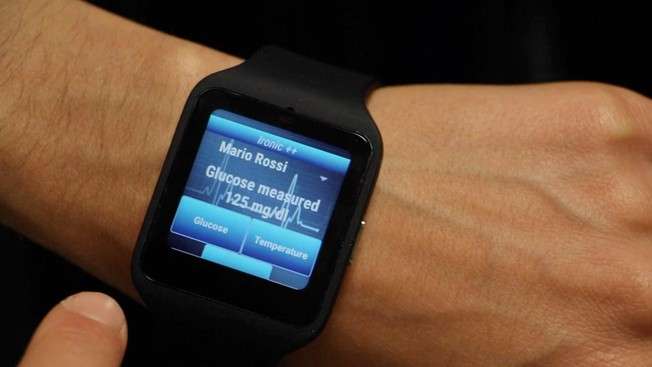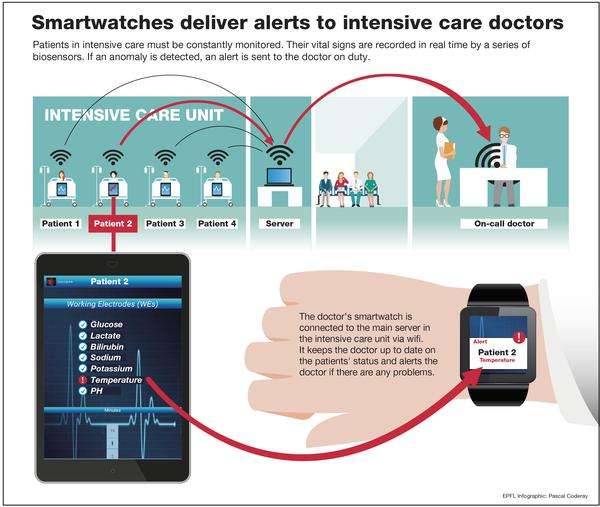Credit: EPFL/ LSI
Researchers have come up with a way to link a smartwatch to the metabolic monitors used with patients in intensive care. If the sensors – which were developed at EPFL – detect an anomaly, the doctor on duty receives an alert anywhere in the hospital.
Intensive care doctors may soon be able to wear a smartwatch connected to the system that keeps tabs on the vital parameters of patients in the intensive care unit. If the patients' readings – which are monitored in real time and stored on a central server – reach a dangerous level, an alert is sent directly to the doctor's wrist via WiFi. The patient's name and readings appear on the watch, so the doctor can react quickly and precisely.
This application is the second step in a comprehensive monitoring system developed by EPFL's Integrated Systems Laboratory (LSI). It began with the creation of a miniaturized microfluidic device that allows medical staff to monitor patients' critical blood levels. The researchers embedded biosensors in it along with an array of electronics to transmit the results in real time to a tablet via Bluetooth. Seven blood levels are closely monitored: glucose, lactate, bilirubin, sodium, calcium, temperature and pH.
The ability to send these readings to a portable device could make it easier to effectively monitor high-risk patients. It means that doctors can get the information they need at any time and place, and they can be alerted in an instant.
Credit: Ecole Polytechnique Federale de Lausanne
"We deliberately chose a standard smartwatch so that we could see what it was capable of," said Francesca Stradolini. "Since we can't send a huge amount of data to it, we use a central server that can evaluate the information and send an urgent request for a medical response to whoever is in charge of the intensive care unit."
The main advantage of this new approach, which was developed in collaboration with the Polytechnic University of Turin, is that it frees up doctors and other medical staff. They can move freely around the hospital and work on other things while keeping close tabs on their patients, thanks to the technology on their wrist.
The device was presented this week at MobiHealth, the International Conference on Wireless Mobile Communication and Healthcare.
Provided by Ecole Polytechnique Federale de Lausanne

























